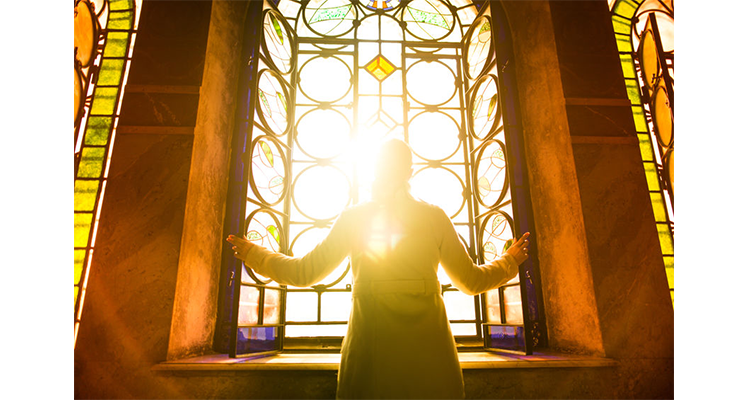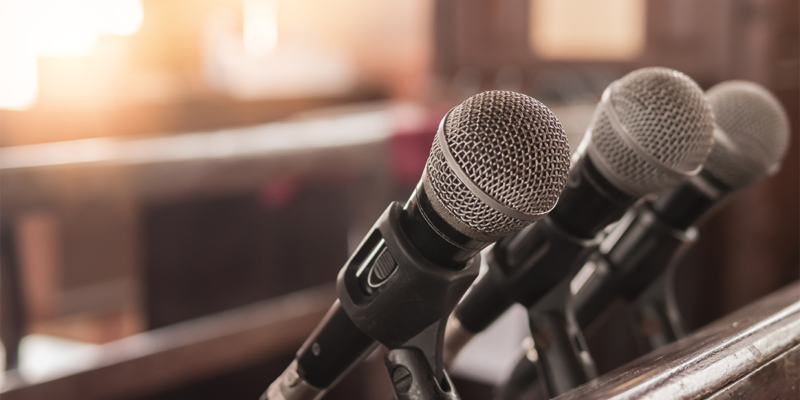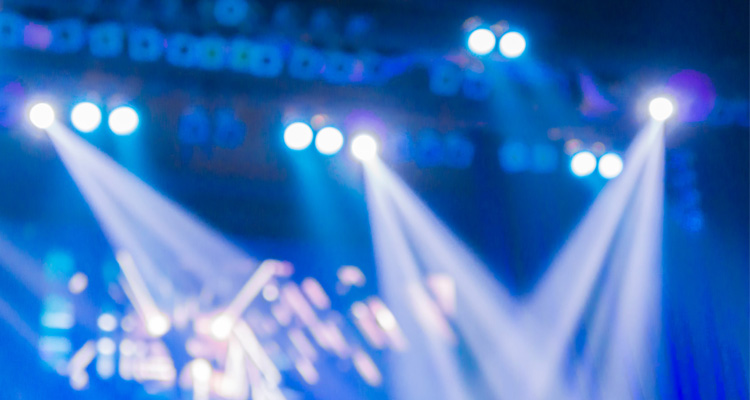The Problem With Video Projection and Natural Light in Houses of Worship

It’s a given: This scenario will play out in almost any size house-of-worship project.
I have lost track of the number of times (at least a hundred over the last decade) a HOW client has asked about the possibility of a large-screen projection installation in the middle of a beautiful, naturally lit sanctuary — in the crossfire of sunlight beams through stained glass windows. I’ll admit it: The last five years have seen an enhancement of screen technologies for light rejection. The projector side of the fence has also seen amazing improvements in light engines, laser technology and lamp life. However, the rules of physics — and the way the human eye perceives light — have not changed.
Here’s a typical example based on a project we did a few years ago: The HOW in question was a medium-sized facility with a seating capacity of around 350-400. Its building and main sanctuary were less than ten years old. The HOW had also recently upgraded its audio system and related technologies, improving the worship experience and enhancing congregational participation and involvement.
At the time of the audio upgrade, we discussed video options and other solutions to make it easier for congregation members to see and understand multiple forms of content, including songs, hymns, prayers, and bible readings. For the most part, this involved various video display and presentation technologies (LCD panels, video-wall-style display configurations, a ring of flat panel displays, and the aforementioned large screen displays).
Back then, no decision was made on what to do until budgets and related factors could be finalized and initiated.
Two years later, the HOW was ready to update its video situation, and initially had no preference for any one solution. However, shortly after that, several members of the HOW council saw a large-screen projection at a neighboring church — and loved it. Therefore, it became their first choice by default.
At our second meeting, I proposed a multiple-LCD screen array surrounding the congregation on three sides. It would put every member within about 10-12 feet of a 75-inch, 2K-resolution display just above seated-eye-height from a viewing angle perspective. But the large-screen enthusiasts raised an objection saying they though the two big screens up front would be better. This is where physics and natural light became an issue. To prove my point, I recommended that we meet again in the morning to see how the sanctuary looked.
In the morning, as I anticipated, the sunlight bathed the entire sanctuary in bright warm light. It reflected nicely off the white walls and colorful glass windows along both sides of the space. Here was the problem: the atmosphere was warm with little artificial lighting — one could easily read books or hymnals. To illuminate (pardon the pun) my point about how natural light would make projection virtually impossible, I brought along a 6-foot portable screen and a short-throw laser projector. I set them up on the stage next to the pulpit, near the spot where a real large screen would be installed. The image on the screen was a good, clean picture of the pastor from the church website. One could barely make out his features, even though the projector was putting almost 2K lumens on the screen.
The building’s orientation (basically north/south) further impacted the image. The plot of land was longer than it was wide, thus, positioning the structure on the long axis of the plot was the only feasible option to get sufficient size and depth to accommodate the spatial volume required. This meant that a lot of sunlight entered the east windows in the morning and the west side windows in the early-to-mid-afternoon. As the group assembled about halfway back in the sanctuary, I asked everyone if they could tell me what was on the screen. Barely half could identify their own pastor due to the washed-out screen.
I said, “Ladies and gentlemen, THIS is the problem with large-screen projection in your space. You have a choice: bright large-screen images and heavy curtains to block the natural daylight off the screens or another video solution. We all know that the natural light was part of the design of this space and is what you all wanted to create the atmosphere you have. Well, it also makes large-screen projection virtually impossible. So we have a choice: light or projection. Or we can go with a solution that is not nearly as badly impacted by the light everyone wants to have.”
That solution was the array of flat panels I proposed initially. Cost-wise it was about the same as two powerful projectors, their mounts and the light-rejecting large screens with the installation. But we also gained one other thing — no future bulb or light-engine-replacement costs and no associated service costs of getting projectors suspended 20 feet up in the air.
A week later, we met again, and the new consensus was to go with the flat-panel array in two stages to manage costs. We planned and installed all mounts and cabling for all the screens. (We initially installed only every other one — with the second set planned for about six months later, as fundraising caught up with costs.)
Two and a half years later, it’s all complete and successful. The congregation likes it very well — as they can see and hear everything, everywhere. The point is, while large-screen technology is amazing and impressive, it’s not for every HOW space or congregation. The solution must fit not only the congregation’s needs and desires but also the physical aspects of the building and its environment. Don’t choose based on desire; choose based on reality.





